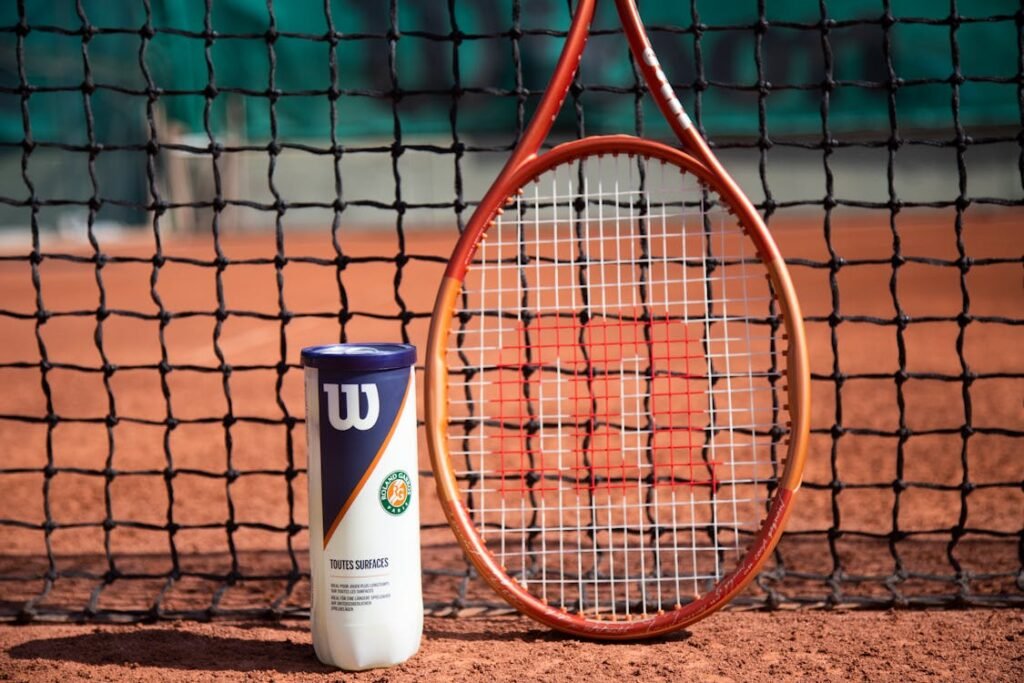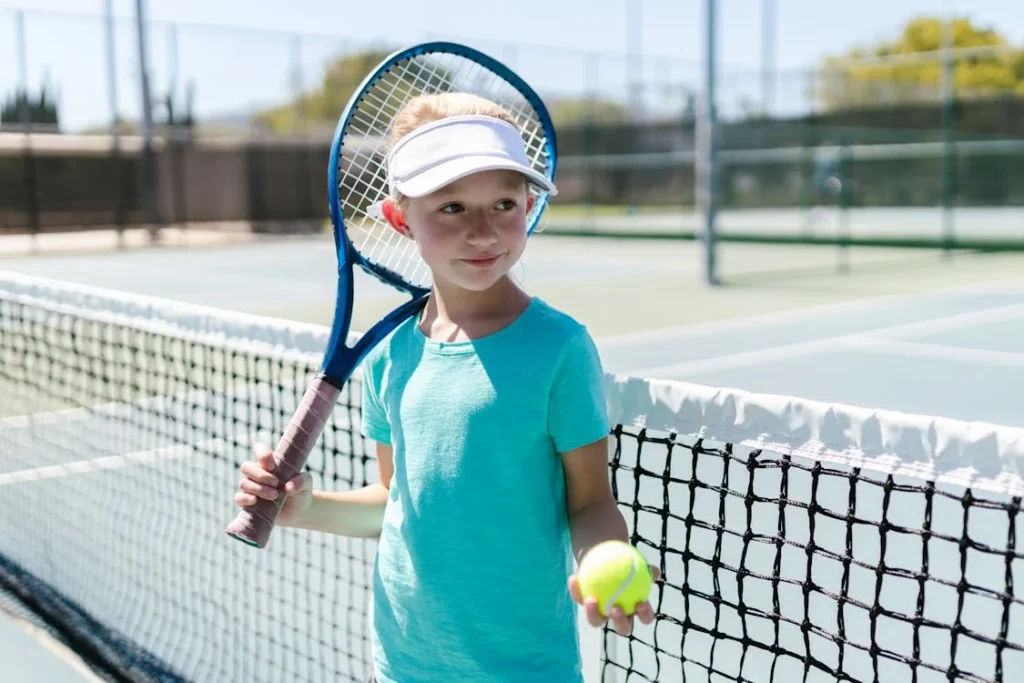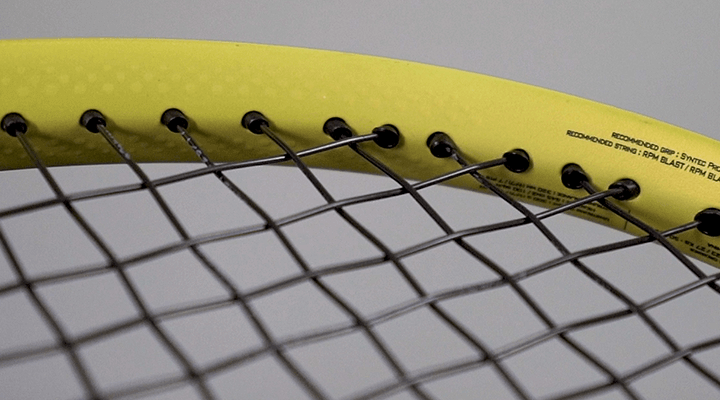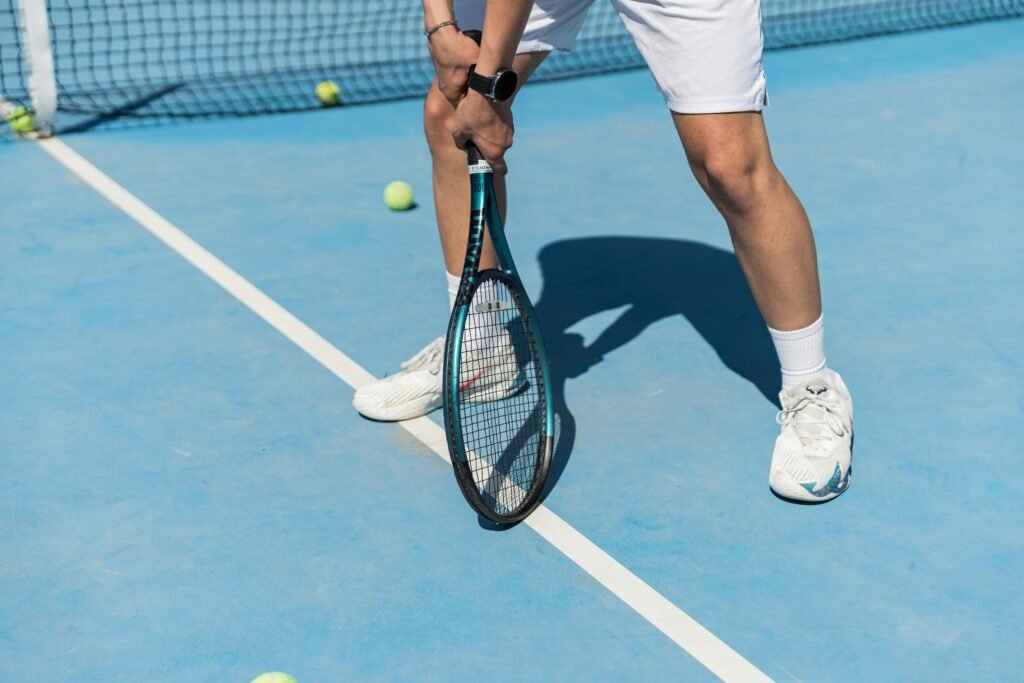Picking out the perfect tennis racket for juniors isn’t just about handing over any racquet; it can make a real difference in how young ones enjoy and grow in the sport. Here’s a straightforward guide, laid out by skill level, to help find that winning racket.
Beginner Players’ Rackets
For those just starting out, a racket that boosts their learning curve is key. So, lightweight with a larger head is the way to go since it’s more forgiving when they miss the sweet spot. Plus, durable materials mean it’ll survive a few accidental bumps.
| Racket Feature | What to Look For |
|---|---|
| Head Size | Big and friendly (105-115 sq in) |
| Weight | 8-10 oz, light and easy |
| Grip Size | About 4 inches (common sizes range from 3-1/2″ to 4-1/4″) |
Beginners usually need help adding oomph to their shots, so multifilament strings can be a game changer, delivering that extra punch and a comfy feel (Wilson).
Intermediate Players’ Rackets
Moving up to the intermediate level brings evolving skills, and the racket should follow suit. A tad smaller head and a bit more weight can really help unleash greater ball speed and muscle building. In more depth check the Best Tennis Rackets for Intermediates Guide.
| Racket Feature | What to Seek |
|---|---|
| Head Size | Medium-range (98-104 sq in) |
| Weight | 10-11.5 oz, with more heft |
| Grip Size | 4 – 4 1/4 inches, snug fit |
How a player hits—hard, gentle, somewhere in between—can be balanced by tweaking string tension: tighter for control, looser for power (Wilson).
Advanced Players’ Rackets

When it’s time for serious play, rackets demanding precision and a close bond with the ball come into action. Mid-size rackets give that sweet feel and control for killer shots.
| Racket Feature | Go For This |
|---|---|
| Head Size | Mid-size (85-97 sq in) |
| Weight | 11.5 oz and up, serious gear |
| Grip Size | 4 1/4 – 4 3/8 inches, fit for a pro’s hands |
The Pro Staff and Blade series from Wilson are top picks for this level. Whether one’s swing is more old-school flat or a fancy modern vertical twist can tip the balance (Wilson).
Choosing the right racket is about feeling good and playing better. It’s always worth it to swing a few rackets before settling on ‘the one’ to find that perfect match. For more handy tips on picking the right racket, hop over to how to choose a tennis racket.
Tennis Rackets for Juniors
Picking out the right tennis racket for kids isn’t just about swinging and hitting; it’s about planting a seed for a lifelong love of tennis. Variables like the right length, fit weight, and what it’s made of are key in finding a great racket for your mini Federer.

Age-Appropriate Racket Lengths
Getting the right size racket in a youngster’s hands can make a world of difference. Swinging it should feel like second nature, not a chore. Here’s a quick guide:
| Age Group | Recommended Length (inches) |
|---|---|
| 4 – 5 years | 19 |
| 6 – 8 years | 21 |
| 9 – 10 years | 23 |
| 11 – 12 years | 25 |
| 13 years and up | 26 (adult size) |
Kids don’t stop growing just because they picked up a racket. So for ages 6-12, aim for one that they can keep using, even during a growth spurt. Wilson’s US Open racket is a top pick for its balance of quality and price, making it a hit with kids and parents alike.
Weight Considerations for Junior Rackets
How heavy a racket feels is a game-changer. Lightweight ones are perfect for little hands and make swinging easier, which means more fun and less fatigue. Here’s what to look for:
| Racket Type | Weight Range (grams) |
|---|---|
| 19-inch | 180 – 210 |
| 21-inch | 200 – 230 |
| 23-inch | 230 – 250 |
| 25-inch | 250 – 290 |
Find a racket that won’t tire them out but still supports learning the right techniques. Brands like TYGER and Universal Sport focus on designing rackets with these growing needs in mind.
Material Composition of Junior Rackets
What’s a junior racket usually made of? Aluminum, mostly. It’s tough stuff, good for kids who might sometimes treat their rackets like drumsticks. Sure, graphite rackets have better playability, but aluminum does the job for casual swings and practice sessions.
Brands like Wilson, Babolat, HEAD, and Tecnifibre stand out in the junior rink, making resilient rackets that keep up with kids’ playful energy. Once they start smashing forehands like pros, it might be time to look at adult options like the Wilson Hyper Hammer. For more racket wisdom, check out my guide on how to choose a tennis racket.
Remember, offering kids the right equipment isn’t just about improving their game—it’s about making sure they fall in love with tennis every time they step onto the court.
Understanding Tennis Racket Specifications

Picking out tennis rackets for the little ones isn’t just about grabbing the flashiest model on the shelf. You’ve got to delve into some nitty-gritty specs that could really change how well they play. Personally, I think the big three to look at are head size, weight, and string pattern.
Impact of Head Size
So, the head size, measured in square inches, kinda dictates your playground on the racket. If you go for a bigger head (anything over 100 sq. in.), you’re giving junior players a broader sweet spot. This is perfect for younger or smaller folks who might not swing like Serena yet. The idea is more room for error means better chances of landing that killer shot.
Now, if you’re more advanced or have a kid who’s already showing some muscle, a smaller head size (under 96 sq. in.) is like giving them a paintbrush with finer bristles – more control and precision. Here’s a breakdown of what works for whom:
| Head Size Category | Size (sq. in.) | Suitable For |
|---|---|---|
| Oversized | 105 and above | Beginners, juniors |
| Midplus | 98-104 | Intermediate players |
| Midsize | 85-97 | Advanced players |
You might wanna click over to this guide on how to choose a tennis racket for even more tips.
Weight and Its Effects
Racket weight, usually in grams or ounces, is a game-changer on the court. Grab a heavier racket and you’re packing extra power and stability—excellent for those deep shots. On the flip side, a lighter racket offers more agility, ideal for quick moves and swift swings.
Here’s a handy chart to guide you:
| Racket Weight Category | Weight Range (grams) | Player Type |
|---|---|---|
| Lightweight | 270-290 | Beginners, juniors |
| Midweight | 290-320 | Intermediate players |
| Heavyweight | 320 and above | Advanced players |
Making sense of these weights ensures juniors wield rackets that feel right and match their play style perfectly.
Influence of String Pattern
Talking strings, the string pattern (like 16/19 – 16 main strings and 19 cross strings) can change how much power or spin you’re getting. Fewer strings = more power and spin, so if your young player wants to spice things up, that’s the ticket. A tight string pattern offers more control, great for when you need to call the shots precisely. In addition you can check the Tennis String Tension guide to learn more.
Check out the typical string patterns below:
| String Pattern | Description | Ideal Player |
|---|---|---|
| 16/19 | More power, decent spin | Intermediate/advanced |
| 18/20 | More control, less spin | Advanced players |
| 16/18 | Balance of power and control | Beginners to intermediates |
For rackets aimed at control, hop over to best tennis rackets for control. By weighing these factors, you’ll arm young champs with the rackets that boost their game and confidence levels.
Fine-Tuning Your Racket

When picking out tennis rackets for the young ones, a little tinkering can really step up their game. I’m talking about fiddling with balance, knowing your beams, and getting the grip just right.
Balancing Your Racket
A racket’s balance decides how it handles out there. It’s like having a trusty sidekick. You’ve got head heavy and head light to choose from.
| Racket Type | What it Does |
|---|---|
| Head Heavy | Adds punch and stability, which can help whack the ball with gusto but might make it trickier to handle. (Tennishead) |
| Head Light | Perfect for those quick reflex shots and precise placement. |
For our junior champs, head heavy might bring the oomph they need to power up, while head light can help with control and quick-footed moves.
Importance of Beam Width
This one’s about how thick the racket is at different puckers and lumps. More width, more power.
| Beam Width | Power | Feel |
|---|---|---|
| Wider | More firepower, less touchy-feely | Newbies might lean towards this to muscle up their hits |
| Narrower | Less bang, more finesse | Seasoned players go for this to nail that pinpoint accuracy (Tennishead) |
For the little smasher, a broad beam lets them sock it with strength, which is how they start finding their groove.
Customizing Grip Size
Grip size is about comfort and control. It’s often measured in inches, and for juniors, we’re around 4 inches per handle. Here’s the lowdown:
| Grip Size (inches) | Ages |
|---|---|
| 3-1/2 | 7-9 yrs |
| 3-5/8 | 9-11 yrs |
| 3-3/4 | 11-13 yrs |
| 4-1/4 | 13+ yrs |
The right grip size means better swings and good racket control. If you want to find the perfect overgrip check the guide clicking on it.
When you put together balance, beam width, and grip size, you’re setting up your tennis prodigy for fun and success on the court. Ready to dive deeper? Don’t miss our guide on choosing the right racket.

